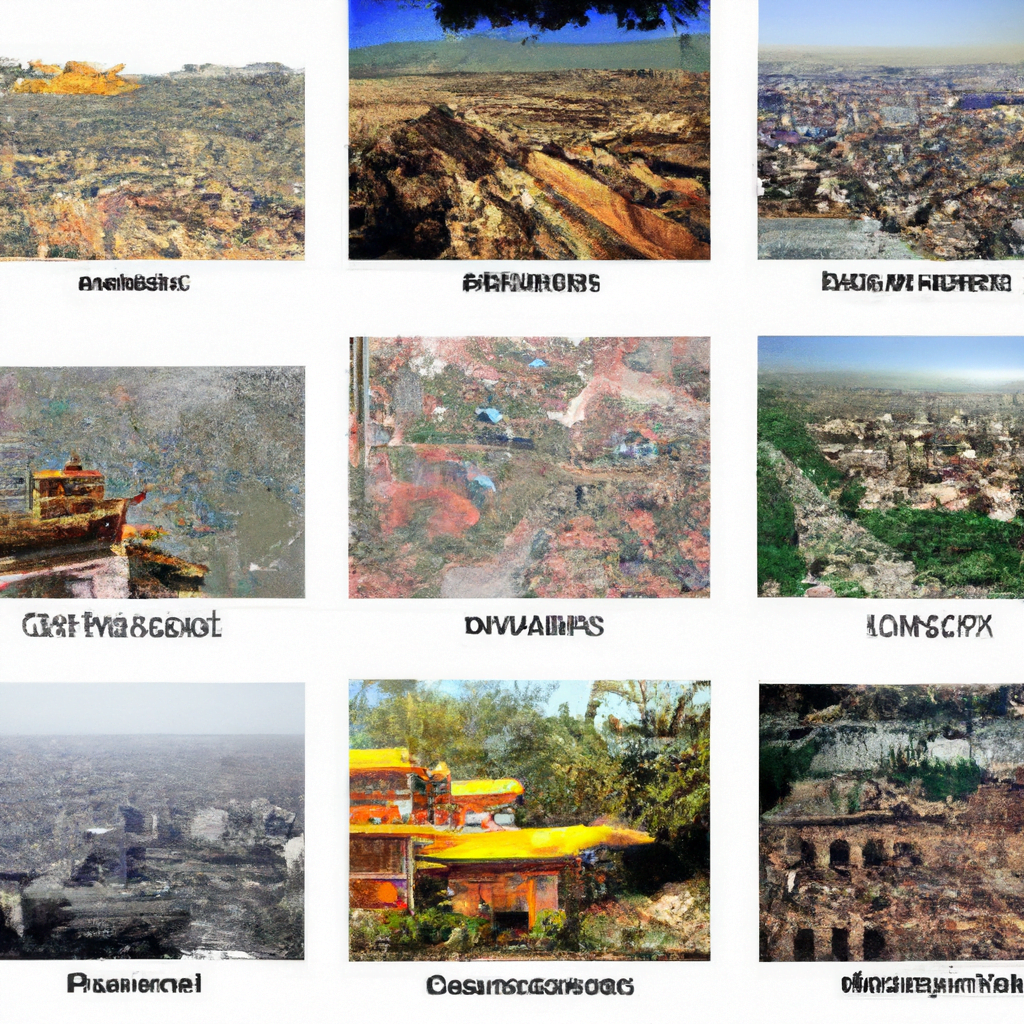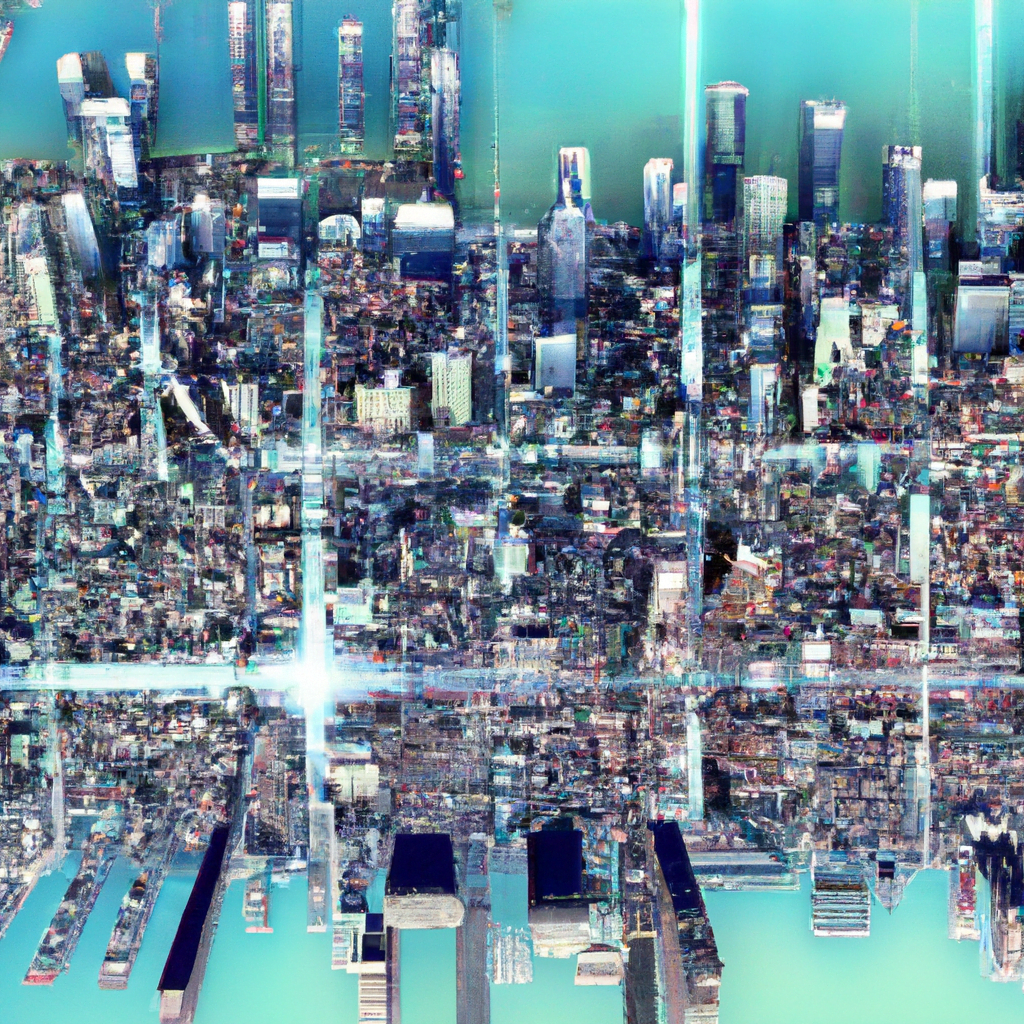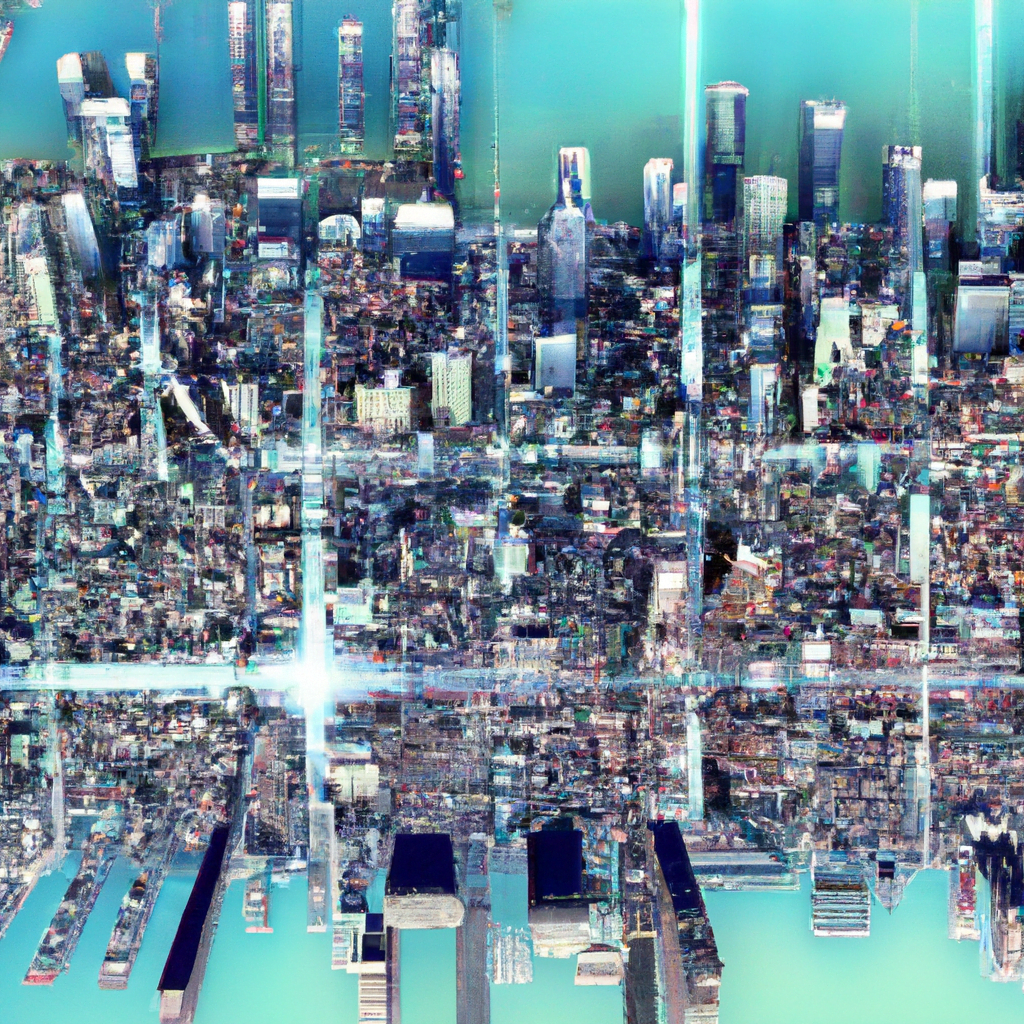In “The Evolution of Urban Planning Innovations,” we explore the fascinating changes in the way cities are designed with a specific focus on Egypt’s real estate industry. With the emergence of the new capital, we delve into the unique features that set it apart from older cities. From innovative infrastructure to sustainable development practices, this article will shed light on how urban planning has evolved over time, shaping the cities we live in today. Get ready to discover the remarkable transformations taking place in Egypt’s real estate sector and the impact of these advancements on future urban landscapes.

This image is property of images.unsplash.com.
The Historical Perspective of Urban Planning
The ancient cities of Egypt
Egypt, renowned for its rich history and ancient civilization, is home to some of the world’s oldest cities. From Memphis to Thebes, these ancient cities were not only remarkable for their architectural marvels, but also for their meticulous urban planning. The Egyptians understood the importance of organizing their cities in a structured manner, establishing grids for streets and carefully arranging buildings to optimize functionality and aesthetics.
The inception of modern planning
While ancient Egyptian cities laid the foundation for urban planning, the concept as we know it today began to take shape during the Industrial Revolution. As population growth and urbanization accelerated, cities faced unprecedented challenges such as overcrowding, inadequate infrastructure, and environmental degradation. It became evident that a systematic approach was needed to address these issues, leading to the emergence of modern urban planning.
The Concept of Urban Planning Innovations
Defining urban planning innovations
Urban planning innovations refer to the creative and forward-thinking strategies employed to design and develop cities in a holistic manner. These innovations encompass a wide range of elements, including architecture, transportation, public spaces, and sustainability. They aim to improve the quality of life for residents, promote economic growth, and create a harmonious and functional urban environment.
The importance of urban planning innovations
Urban planning innovations play a pivotal role in shaping the future of cities. By incorporating new ideas and approaches, planners can address the complex challenges faced by modern urban areas. These innovations promote efficient land use, enhance transportation networks, and create inclusive and sustainable communities. They also foster economic development, attract investments, and contribute to the overall well-being of residents.
Innovative Urban Planning in Old versus New Cities
Comparative study between old and new cities
A comparative study between old and new cities provides valuable insights into the evolution of urban planning. While ancient cities like Cairo and Luxor were designed centuries ago, new cities such as Egypt’s new capital, showcase contemporary urban planning approaches. By examining the differences between these two types of cities, we can better appreciate the advancements made in urban planning over time.
The case of Egypt’s new capital
Egypt’s new capital stands as a prime example of innovative urban planning in a modern context. Situated east of Cairo, this ambitious project aims to alleviate the population density in the capital while providing a sustainable and inclusive living environment. The new capital’s planning incorporates cutting-edge technologies, green spaces, efficient transportation systems, and smart infrastructure. It serves as a testament to Egypt’s commitment to embracing progress and meeting the challenges of the future head-on.
New Capital’s Unique Urban Design
The master plan of the new capital
The master plan for Egypt’s new capital is a carefully crafted blueprint that outlines the city’s development over the coming years. It takes into account various factors, including population growth projections, economic considerations, and sustainability goals. The plan emphasizes the creation of distinct districts, each with its own unique identity and character. These districts will include residential areas, commercial hubs, recreational spaces, educational institutions, and cultural centers, all seamlessly interconnected through a well-designed network of roads, public transportation, and pedestrian-friendly pathways.
Key features in its urban design
The urban design of the new capital incorporates several key features that differentiate it from older cities. Firstly, green spaces and parks are integral to the city’s layout, promoting a healthy and sustainable lifestyle. These verdant areas not only enhance aesthetics but also improve air quality and foster a sense of community and well-being. Secondly, the new capital prioritizes walkability, with an emphasis on pedestrian-friendly streets and dedicated cycling lanes. This promotes a healthier lifestyle while reducing reliance on private vehicles. Lastly, the city embraces mixed-use development, where residential, commercial, and recreational areas are strategically integrated. This approach creates vibrant and diverse neighborhoods that cater to the needs of residents and visitors alike.

This image is property of images.unsplash.com.
Sustainable Urban Planning Strategies
Role of sustainability in urban planning
Sustainability lies at the core of modern urban planning practices. With the increasing awareness of climate change and resource depletion, cities must prioritize environmentally friendly approaches. Sustainable urban planning focuses on minimizing carbon emissions, conserving resources, and integrating renewable energy sources. It also emphasizes the efficient use of land, promotes biodiversity, and reduces waste generation. By embracing sustainable practices, cities can create a greener, healthier, and more resilient future.
Adoption of sustainable elements in the new capital
Egypt’s new capital demonstrates a strong commitment to sustainability. The city’s planning incorporates various sustainable elements, such as solar energy systems, green building practices, and efficient waste management. Renewable energy sources are harnessed to minimize the reliance on fossil fuels, while green building standards ensure energy-efficient structures. Additionally, the new capital employs innovative water management techniques, including rainwater harvesting and wastewater treatment, to reduce water consumption. These sustainable strategies not only preserve the environment but also contribute to the city’s long-term economic viability.
Technological Integration in Urban Planning
Role of technology in planning cities
Technology plays a crucial role in modern urban planning, revolutionizing the way cities are designed and managed. Advanced computer modeling, Geographic Information Systems (GIS), and data analytics enable planners to make informed decisions, optimize layouts, and anticipate potential challenges. Additionally, technology facilitates efficient traffic management, intelligent transportation systems, and smart infrastructure solutions. By harnessing the power of technology, cities can streamline operations, improve resource allocation, and enhance the quality of life for their residents.
How the new capital embraced technology
Egypt’s new capital embraces technological innovation to create a smart and efficient city. Advanced GIS tools and computer simulations were utilized to assess various aspects of the city’s planning, including transportation networks, land use allocation, and zoning regulations. The new capital also incorporates smart city elements such as integrated digital platforms, intelligent sensors, and data-driven systems. These technologies enhance mobility, optimize resource management, and improve the overall urban experience. By embracing technological integration, the new capital sets a precedent for future cities to leverage innovation for sustainable and efficient urban planning.

This image is property of images.unsplash.com.
Influence of Global Trends on Urban Planning
Impact of globalization on city planning
In today’s interconnected world, cities around the globe are influenced by global trends and best practices in urban planning. Globalization has facilitated the exchange of ideas, experiences, and knowledge, allowing planners to draw inspiration from successful projects worldwide. This cross-pollination of ideas has led to the adoption of innovative solutions, the integration of diverse cultures, and the promotion of international collaboration in urban planning.
Adaptation of global trends in the new capital
The new capital of Egypt exemplifies how global trends are integrated into urban planning. The city draws inspiration from successful international projects known for their sustainability, inclusivity, and efficiency. Lessons learned from cities like Barcelona, Singapore, and Copenhagen have been adapted and incorporated into the new capital’s planning. This approach ensures that the city benefits from global best practices while tailoring them to suit Egypt’s unique cultural and social context. By combining global trends with local knowledge, the new capital creates a truly remarkable urban environment.
Facilitation of Social Inclusivity in Urban Planning
Importance of social inclusivity in urban planning
Social inclusivity stands as a fundamental principle in modern urban planning. Cities should strive to provide equal opportunities, access, and services to all residents, regardless of their socio-economic background, gender, race, or age. Inclusive planning ensures that the needs and aspirations of diverse communities are met, fostering a sense of belonging, cohesion, and social justice.
Inclusion strategies in the new capital’s planning
Egypt’s new capital takes significant strides towards social inclusivity. The city’s planning considers the needs of various demographic groups, including families, the elderly, and people with disabilities. Barrier-free design principles are implemented to enable easy access to public spaces, buildings, and transportation. Community engagement is also prioritized through participatory planning processes, ensuring that residents’ voices are heard, and their aspirations are reflected in the city’s development. The integration of social infrastructure, such as educational institutions, healthcare facilities, and recreational spaces, further enriches the new capital’s inclusivity. By prioritizing social inclusivity, the new capital aims to create a city that fosters equality, understanding, and harmony.

Transportation and Mobility in Urban Planning
Concept of mobility in city planning
Transportation and mobility play a critical role in urban planning, shaping how people move within a city and access various amenities. Effective transportation systems promote connectivity, reduce congestion, and enhance the overall efficiency of urban areas. Mobility-focused planning emphasizes the integration of diverse transportation modes, such as walking, cycling, public transit, and private vehicles, to provide seamless mobility options for residents and visitors.
Transportation network in the new capital
The new capital of Egypt prioritizes sustainable and efficient transportation options. The city’s planning emphasizes the development of an integrated network of roads, bridges, and public transit systems. Pedestrian-friendly streets, cycling lanes, and well-designed sidewalks encourage active mobility and reduce dependence on private vehicles. The new capital also incorporates modern public transit systems, including metro lines and bus services, to ensure convenient and reliable transportation for all. By prioritizing accessibility and interconnectedness, the new capital’s transportation network fosters mobility, reduces traffic congestion, and enhances the overall quality of life for its residents.
Challenges and Opportunities for Future Urban Planning
Potential roadblocks in planned cities
While planned cities offer numerous advantages, they also face unique challenges. The new capital of Egypt, like any planned city, encounters potential roadblocks such as rapid urbanization, unpredicted population growth, and the need for continuous adaptation to emerging technologies and global trends. Economic sustainability, attracting investments, and maintaining community engagement are also crucial challenges. However, with careful foresight and adaptive planning, these challenges can be transformed into opportunities for growth and innovation.
Future outlook and possibilities in urban planning
Urban planning is an ever-evolving discipline, constantly adapting to new realities and emerging global trends. The future holds exciting possibilities for innovative urban planning, as technology advances, sustainability becomes increasingly crucial, and cities continue to grow. The new capital of Egypt serves as a testament to the potential of well-planned cities. Its success paves the way for future urban developments, inspiring planners worldwide to embrace creativity, sustainability, and inclusivity in their pursuit of vibrant and thriving cities.
In conclusion, the historical perspective of urban planning showcases the evolution and advancements made in designing and developing cities. Through innovative urban planning, ancient cities inspire modern approaches, and new cities exemplify the integration of cutting-edge technologies, sustainability, and social inclusivity. Egypt’s new capital serves as an exceptional example of how urban planning can address the challenges of today while envisioning a prosperous and sustainable future. By embracing global trends, prioritizing social inclusivity, and integrating efficient transportation and sustainable strategies, cities can shape a better tomorrow for their residents and generations to come.


